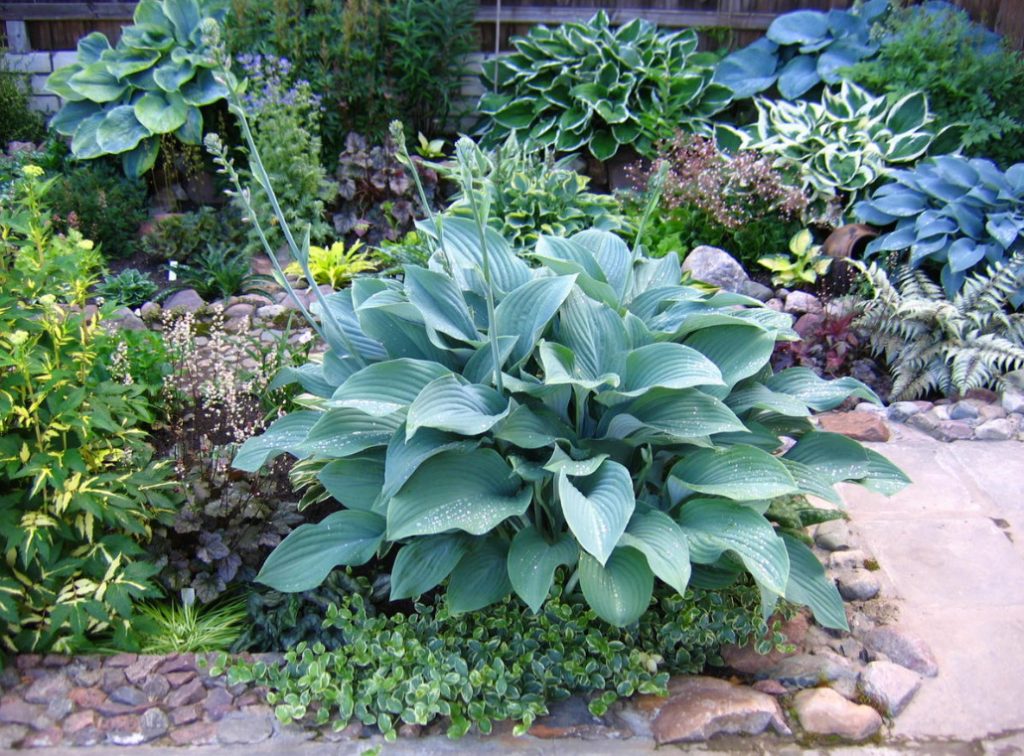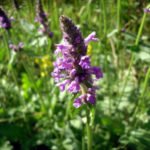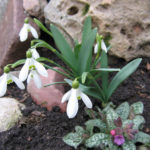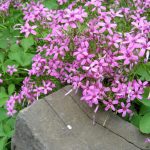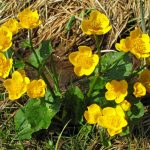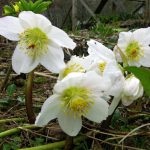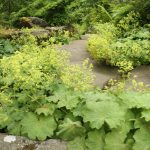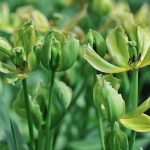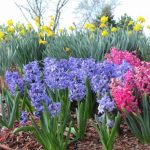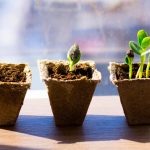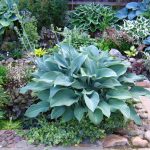Soil composition and permanent planting
Flower growers are used to treating Hosta as unpretentious garden plants. Indeed, Hosta grow on almost any treated garden soil. But, according to experienced collectors, the key to success in growing various varieties and types of Hosta is the correct composition of the soil.
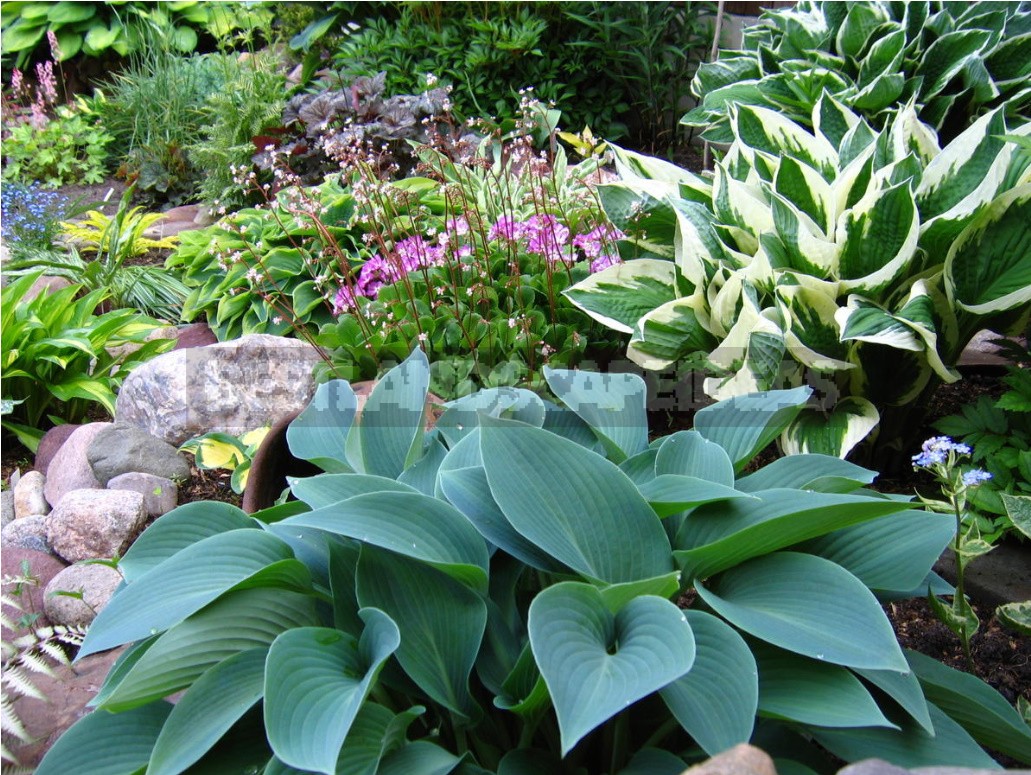
The General recommendation for most Hosta is a light loam with a neutral slightly alkaline or slightly acidic reaction (pH 6.5-7.5). A nutritious moist and well-drained soil with many microorganisms involved in the formation of humus, aerating the soil and saturating it with oxygen – this is the ideal where Hosta is able to show itself in all its glory.
Heavy clay soils do not allow air to pass to the root system, and on sandy soil, moisture, so necessary for Hosta, does not last long. Therefore, it is necessary to add moisture-retaining materials to the sandy soil: clay and organic matter-peat, humus, compost. In the future, it is recommended to mulch the sandy soil annually with the same organic matter, but 2-3 times more than on loamy soil.
You should also take into account this pattern: on sandy soils, plants develop a powerful root system, as nutrients are quickly washed away, and Hosta grow more extensive and branched roots in search of water and nutrients, while the aboveground part, on the contrary, does not develop enough.
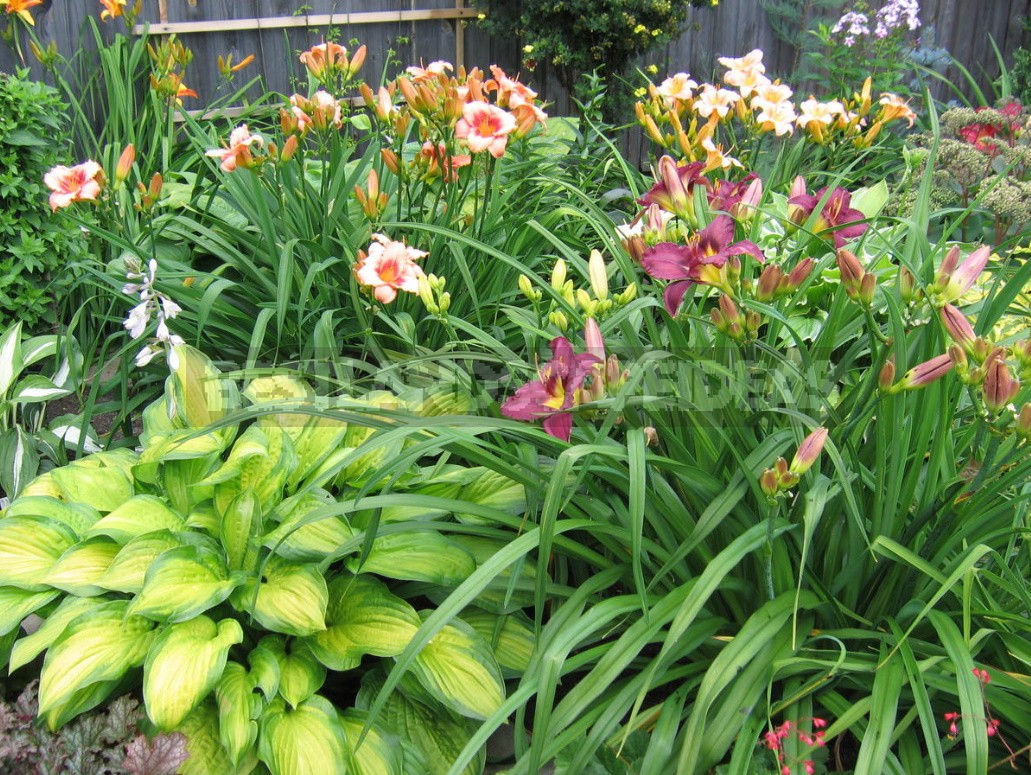
On heavy clay soils, add coarse-grained sand, fine gravel, organic matter with a loose coarse-fiber composition, and even if necessary, make a General drainage of the site, if there is frequent water stagnation.
Hosta do not like alkaline soils, and the leaves show signs of chlorosis: they turn yellow, and the veins remain dark green. In blue and blue Hosta, the foliage turns a dirty shade. Acidify alkaline soils with acidic peat and other materials and means that help neutralize the alkaline reaction.
Hosta is quite reasonably considered a water-loving plant, but you can only plant plants near reservoirs in the coastal zone, in the so-called “swamp” with constant stagnation of water, taking into account the varietal characteristics of cultivars. Not all Hosta will feel good in such places. For example, miniature and dwarf animals often die immediately. And other varieties and species grow well, but only if the plants are already old enough and the bushes are powerful.
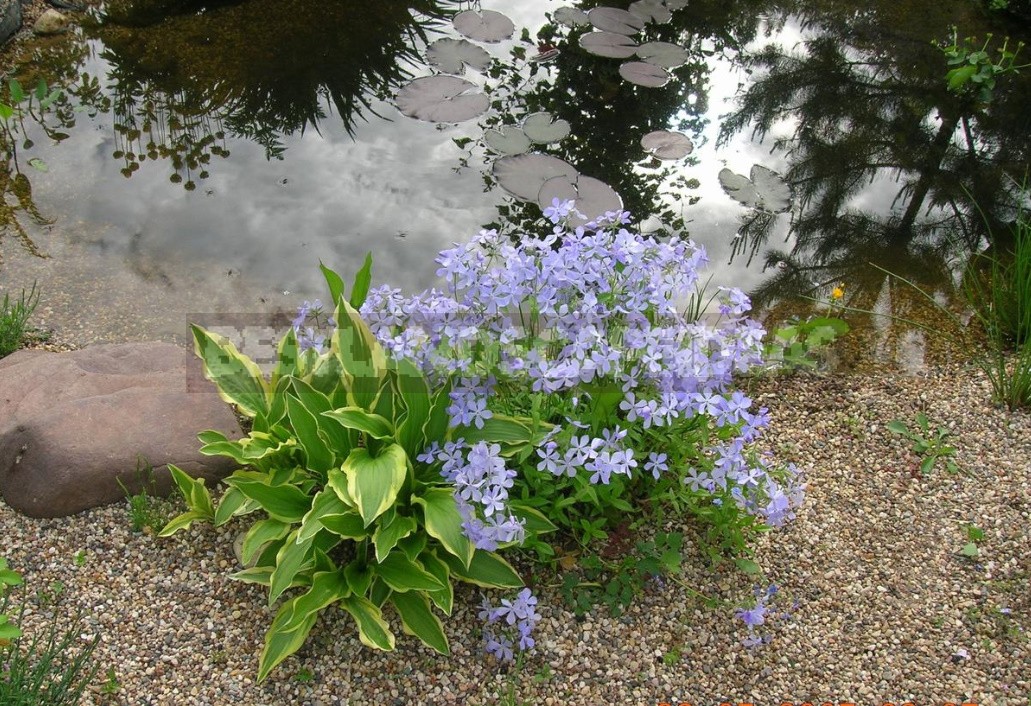
On high, non-flooded banks of reservoirs, almost all Hosta varieties and species feel fine – high humidity near water contributes to long-term decorative and strong plant health.
Landing nuances
The depth and width of the planting pit depends on the Hosta variety and type and must be proportional to the expected size of the plant in its adult state (more than 6 years):
- for giant and large Hosta, the width of the landing pit should be from 80 to 150 cm, and the depth should be from 40 to 50 cm;
- for medium and small, the width of the landing pit is from 30 to 60 cm, and the depth is from 25 to 35 cm;
- for miniature and dwarfish, the width is 15-20 cm, the depth is 10-15 cm.
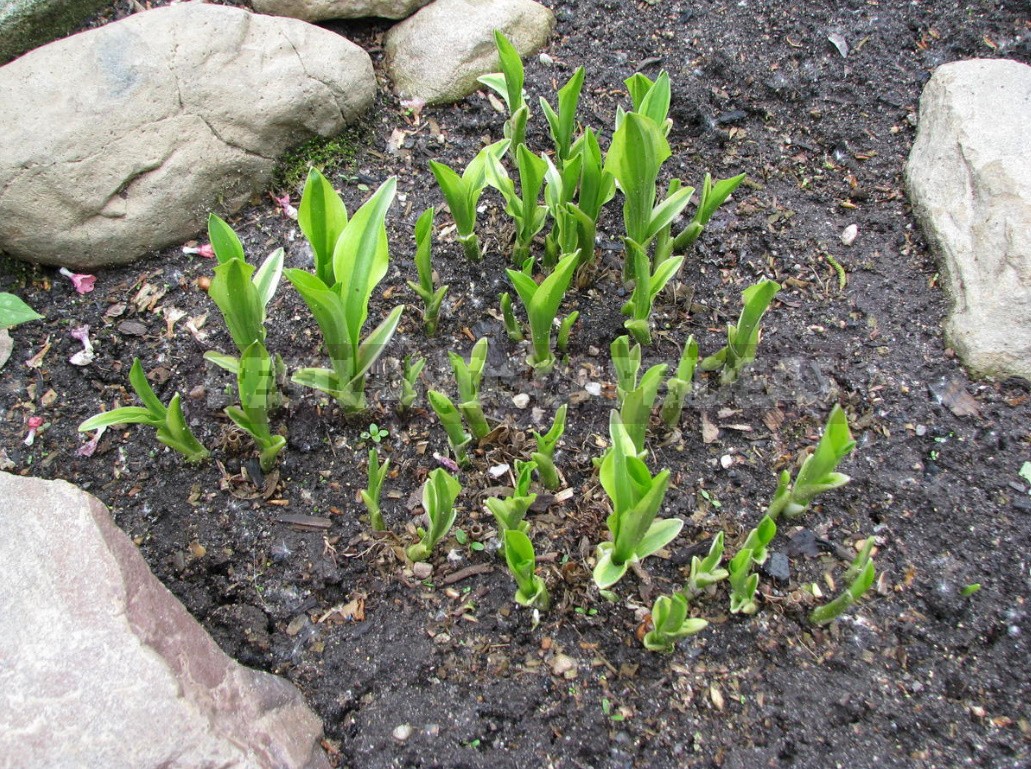
The width of the landing pit also depends on the type of root system: for long-rooted Hosta, the landing pit should be wider than for Hosta with a dense root system.
For giant, large, medium and some small Hosta, 1/3 of the organic fertilizer is added to the planting pit: deoxidized peat, rotted manure, compost, sapropel. It is possible to use fresh manure, but only on the bottom of the planting pit and provided that the root system of the young plant will not touch it when planting. In the future, the fresh manure will have time to decompose when the Hosta roots reach it.
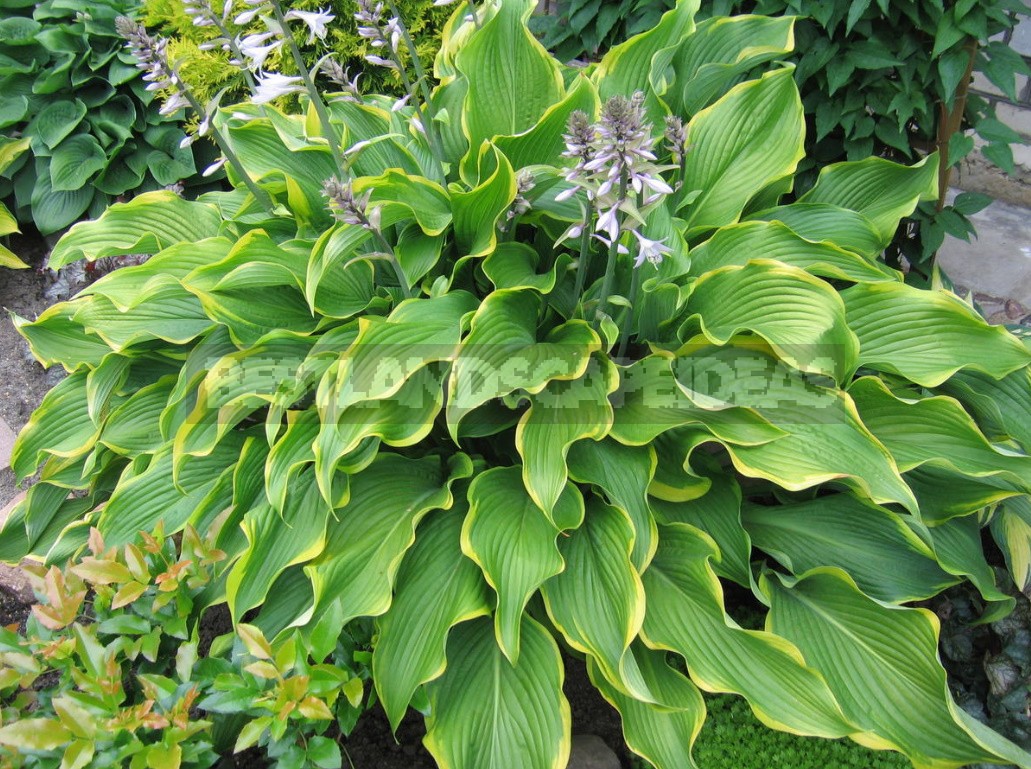
Mineral fertilizers are also added to the earth mixture. Hosta likes rich garden soil, but in the pursuit of lush and powerful bushes, do not abuse fertilizers. Keep in mind that some varieties are sensitive to an overabundance of organic matter, they have breaks and stretching of the pattern along the edge of the contrasting border, and the light middle of the leaves can rot, and in its place ugly holes are formed with brownish rotting edges.
For most of the small, for all miniature and dwarf varieties, the planting places are prepared a little differently. These Hosta need good drainage and breathable soil. The earth mixture should contain both loosening and moisture-retaining materials: coarse-grained sand, crushed bark, chopped sphagnum moss, coarse-fiber deoxidized peat, coconut chips, and fine gravel. It should be less nutritious than for giant, large, medium and small Hosta.
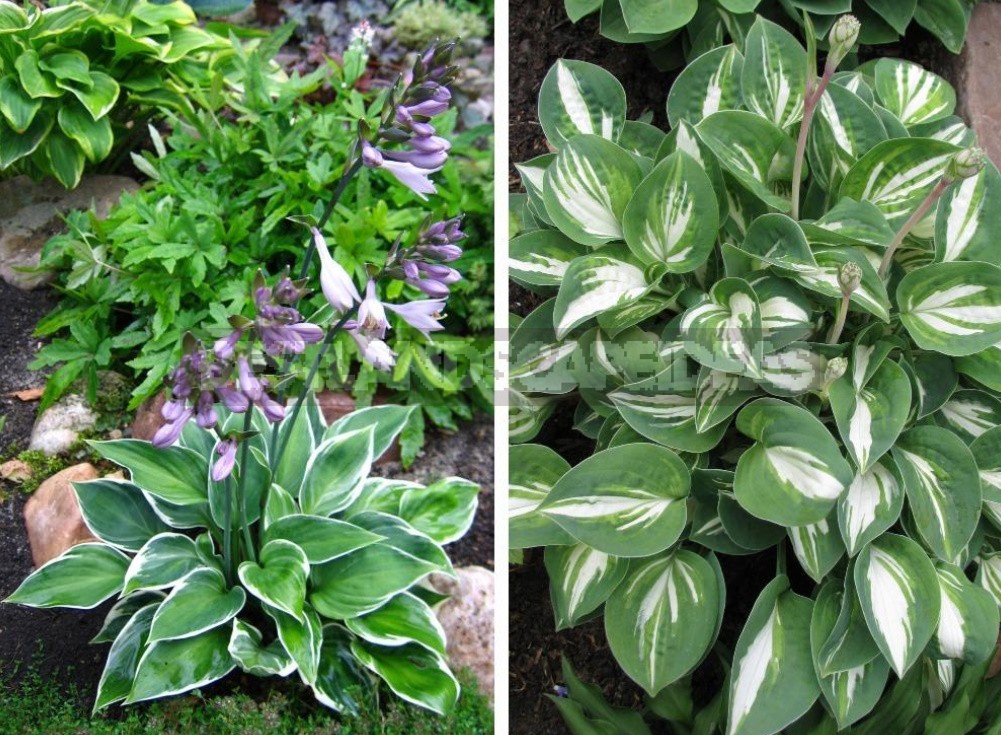
Collections of miniature and dwarf Hosta are often planted in gravel gardens or special containers, which in our climate zone in winter are dug into the ground or carefully insulate the side walls with dry leaves, moss, straw, and then wrapped with a thick layer of burlap.
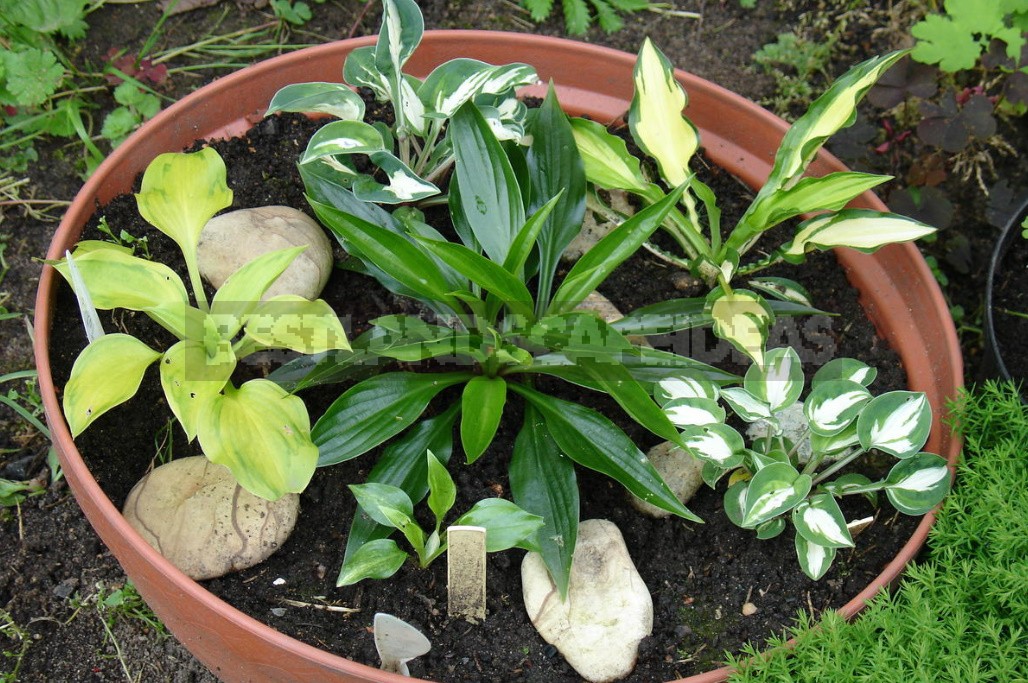
When planting Hosta in the ground, it is important to properly bury the root neck. In giant and large, it should be no deeper than 4-7 cm from the ground level, in medium-sized-3-5 cm, in small-2-4 cm, in miniature and dwarf-1-2 cm. If Hosta is planted too deep, it inhibits the development of young shoots, and fungal diseases can occur on the foliage, especially in miniature and dwarf varieties; in some varieties, improper planting can cause root rot. If Hosta is planted too small, then the root system may bulge in the spring, especially this is critical for miniature and dwarf varieties and species, as well as young plants.
If the purchased Hosta are still small, it is advisable not to plant them immediately in a permanent place in the flower garden, but to arrange a shadow bed for the kids-a flower garden like a school or to plant them temporarily near other already adult plants.
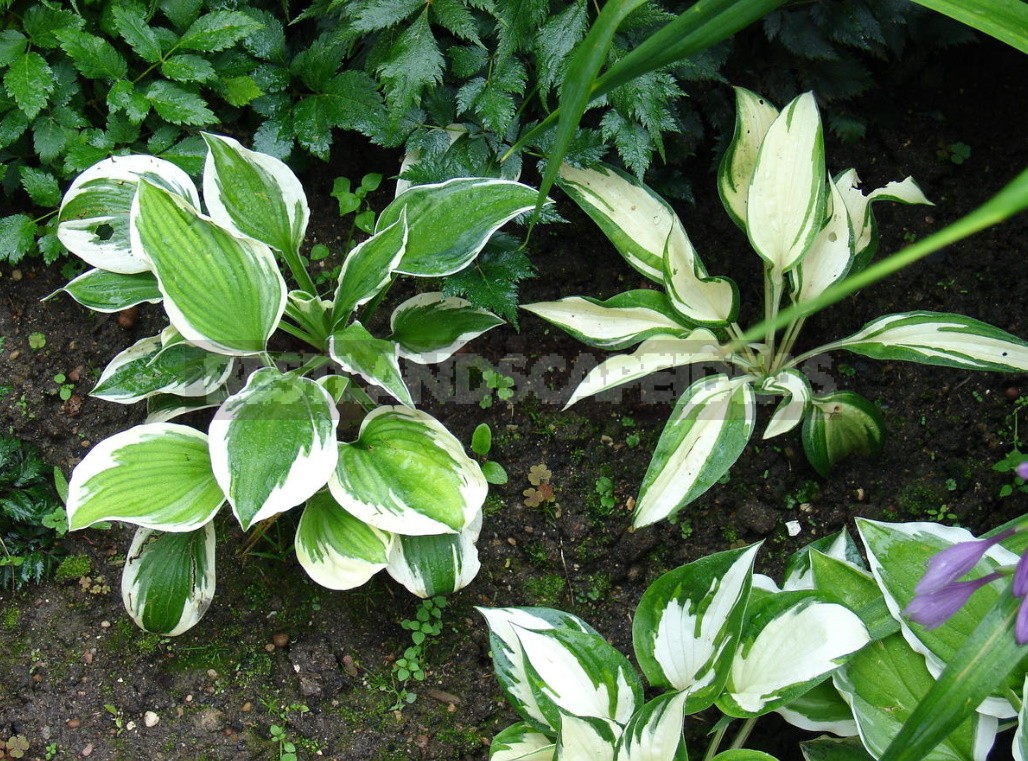
As soon as the young Hosta grow up and begin to develop actively, they are transplanted to a permanent place by the method of transfer-transshipment — with a lump of earth, without disturbing the root system. Hosta can adapt easily and quickly to a new location, and you can perform such transplanting throughout the season, starting in spring (as soon as the first shoots appear from the ground) and up to the beginning of October, even after the first autumn frosts.
The secret of successful cultivation of highly ornamental plants in the garden consists of a variety of agricultural techniques that seem at first glance not so important. But experienced gardeners are well aware that these “little things and subtleties”, applied regularly and in a timely manner, are the main secret of prosperity, health and well-being of your favorite plants.
